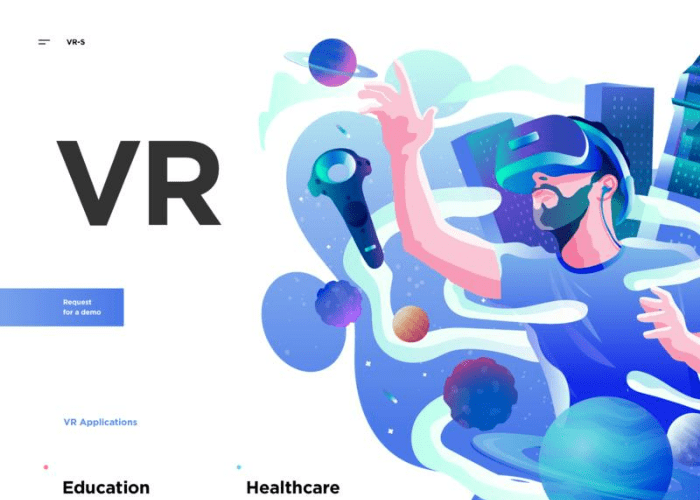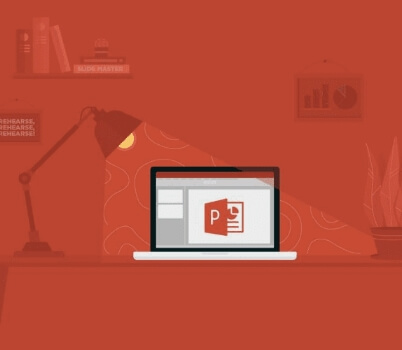Presentation Skills for Marketing Managers
A marketer’s chief responsibility is communication with customers. Getting the right message to the right people and making them act, think or feel a certain way takes skill and knowledge. Not all marketers are good at every type of communication and may focus on a specific area. For marketing generalists in smaller businesses, being a good ‘all-rounder’ is a big advantage. Even if you don’t need to physically create imagery, for example, you will still need to understand what makes an image effective if you are leading a campaign. So, a good marketer never stops learning to improve their communication skills.
Here are some of the main communication skills that marketers must continue to learn during their careers:
1.Compelling copywriting

If you are responsible for writing ads, sales collateral, press releases, blogs and newsletters, each type of copy you create requires specific knowledge. A creative style with words is a great start but you will also need to understand what motivates a journalist to pick up your press release and how to present the information, do you know the pyramid style? For web pages and blog copy, knowledge of SEO, content planning and research skills are needed. Is your ad copy persuasive? Is it punchy enough and does it compel your audience to buy from your brand? Each and every type of marketing copy you create needs to fulfill a different objective and, as a result, needs the writer to have the suitable skills and knowledge to produce it.
- Public Speaking Skills

If you are responsible for Public Relations in your business, you have to deal with the press, speak at conferences or even present ideas internally to staff members? Public speaking is not something everyone enjoys but with training, it does get easier. Practice makes perfect! If you don’t have someone to practice in front of, record yourself and play it back. You will see how many ‘ums’ and ‘so’ you need to remove, whether you sound and look confident in what you are saying and if your presentation is delivering the right message.
- Non-verbal communication

Just as salespeople need to work on their non-verbal communication, so do most marketers. If you are working on your public speaking skills, you will notice your body language, facial expressions and tone of voice have as much, if not more, of an impact than your choice of words.
- Visual communication

Imagery and Brand identity are powerful ways to carry out the message, and becoming a familiar face to your audience and deliver information to them. Even if you are not a skilled graphic designer, you should still understand the technique of visual marketing, how to interpret a brief and check that imagery fits your brand and marketing objectives.


No matter strengths and weaknesses in communication skills, you can learn a great deal about the areas in which you are less confident while continuing to excel and improve on your natural talents, and After gaining the communication skills all you needs is the ability to create an effective marketing presentation is still a prized skill in modern digital marketing. There are several use cases where this courage will be practical, such as:
• When proposing a new marketing campaign, you may need to pitch your ideas to your superiors or clients by giving a presentation at a meeting.
• When conducting a teleseminar or webinar for training purposes, addressing user needs, or launching a new product.
• When creating marketing content for platforms as a part of your overall content marketing strategy.
• When you decide to take up the challenge of becoming a speaker at one of the networking events or marketing conferences.
Beside being comfortable speaking in front of a group and using slideshow presentation software such as PowerPoint, Keynote, Google Slides, or Prezi, there are some general guidelines which can be applied to any marketing presentation ideas that will ensure effectiveness in terms of engaging your audience, creating sales interest, and ultimately driving the message.
These following guidelines will help you create a marketing presentation that is both effective and engaging.

Seize your audience’s attention

Start your presentation with a bang by asking a dramatic question tailored to your audience’s most pressing pain points.
Start your presentation with a bang by asking a dramatic question tailored to your audience’s most pressing pain points.
For example, if your topic is something on the lines of how to improve your content marketing ROI, you can start with a provoking remark such as “B2B organizations waste almost $1 billion annually in incompetent and ineffective content marketing, are you contributing to that?” or maybe something like “60-70% of B2B content created is never used because the topic is irrelevant to the buyer audience. So, is your content actually useful or junk?”
your audience’s emotions and painting a vivid picture of their problems will force them to pay attention to your presentation. Oli Gardner, who is well-known for his inspiring presentations on conversion rate optimization, has a striking approach to his presentations. He starts off by presenting a few gloomy, despairing slides, and once the audience is amply dejected, he swoops in with good news.
The aim of all this is to get them on the right path, to seize their attention and get them focused on what you have to say.
Promise something and deliver it

Once you’ve got them interested in what you have to present, it is time to make some legit promises, just as you do in your everyday digital marketing activities. For example, while creating a pay-per-click ad, you write a convincing copy that promises to solve the reader’s problems, getting them to click through to your landing page. Likewise, if you are writing a blog post, you use the power of storytelling to convince them to take some action such as click a call to action.
Have you ever seen a tutorial on YouTube? The next time you do, note how all the finest quality videos are the ones in which the presenter makes it crystal clear what you’ll achieve within the first 30 seconds if you watch the entire video. They show you the end-result as proof that they know what they’re doing, and you’ll get what you came for.
So, in the case of the mentioning remarks on content marketing ROI, you can promise your audience that you’ll show them the exact strategies you used to achieve your goals (rankings, traffic, conversions, etc.).
Your product or service may be the greatest invention in the world, but delivering a killer sales pitch is how you’ll really make your sales.
The point is, the start of your presentation should be all about answering the famous copywriting question: “What’s in it for me?” Make it apparent within the first five minutes that your presentation is going to solve their problems and will provide them with actionable takeaways.
Of course, making these clear promises means you also have to fulfill them. In fact, go above and beyond in delivering what you promised by following the wise adage “underpromise and overdeliver.”
Tell an engaging story backed by data
The one thing common among all effective presentations is how they influence storytelling and real-life examples to drive the point home.

There is an amazing marketing quote by Melinda Partin that said: “At its very core, marketing is storytelling.”
The same applies to your presentations. Basically, your audience is more likely to engage with your content if they find it highly relatable and personal. A story offers that kind of connection by introducing a character fictional or otherwise, who has a problem you can solve. It creates a script that cannot be ignored by the audience.
So, going through your slides, use functional, real-life examples to link the presentation together smoothly. It’s as simple as telling how you or someone else performs what you are trying to transfer.
That said, ensure all your examples and illustrations are backed by data driven marketing from reliable sources. Your slides should clearly specify the information source. The last thing you want to hear is “get your facts straight” while giving a presentation.
Have less slide content rather than more
How many times have you sat through a presentation where the slides are so full with text that it makes the whole presentation ineffective?
Don’t do that. As you may have heard, the average human’s attention span today is pitifully low. And when it comes to paying attention in conference settings and elaborate presentations, it’s even worse. Your audience likely has far better and more urgent things to do than listen to you and your wordy slides.
So, you have to work to simplify your slides and include only the key points as written text instead of cramming them with the text you’re supposed to speak and explain. Use slides to support speech, not replace it. And just like with stories and examples, include as many visuals as images, GIFs, videos as possible to aid understanding.
Moreover , the more slides, the better. Instead of speaking to one slide for several minutes, spread your content around multiple slides. Use numerous images to illustrate your point, and keep the slides moving. This will help tackle the issue of deacrease attention spans.
Furthermore, make sure you use high-quality images. They may look fine on your computer, but images often become blurry after projection on a bigger screen. So make sure you checked that.

Also, if you don’t have a graphic designer and there’s an important need to whip up some good-looking graphics or remove/edit the background of some image you wish to include in your slides, consider using intuitive online tools such as Canva and AutoClipping, respectively.
Use humor wisely

Just because you are presenting in a serious context, doesn’t mean your presentation has to be boring or bland. Including some jokes here and there will increase audience engagement and retention of your content.
So, give your slides a facelift by supplying them with relevant humor. This can take the form of witty wordplay, GIFs, and even memes. However, make sure the humor is, in fact, relevant to the content you’re presenting and not a distraction. Don’t make it seem forced but natural.
Most memes available on the internet are of low-quality and resolution, you’ll have to take some time to create your own original memes, which seems fun!
Don’t forget

Don’t leave your audience hanging at the end of your presentation. Tell them exactly what to do next: is this the part where they can ask questions and clarify their doubts?
How should they use the information you’ve just presented to solve their problems?
Repeat all of the most important points explained in the presentation and make sure the value you promised at the start of the presentation is actually delivered. If your presentation lacked two-way communication and audience participation, now is the time to have a proper exchange of ideas and casual debates.
At last, as it was a marketing presentation, it makes sense to end it with a definite that carry the exact action you want your audience to take.
